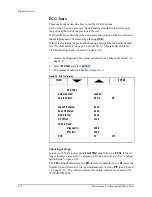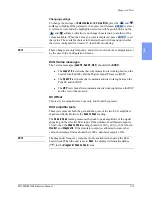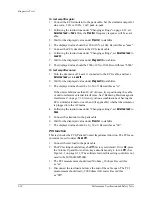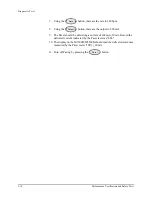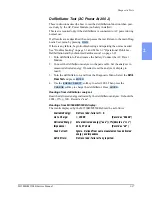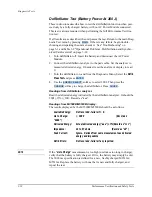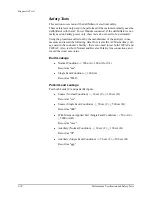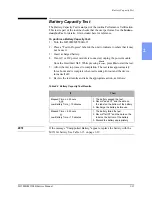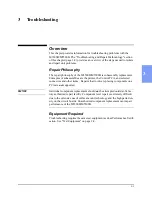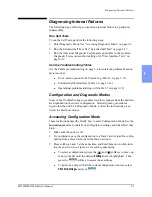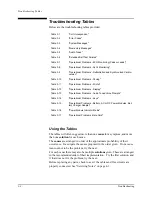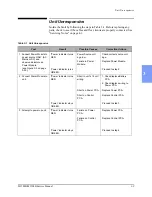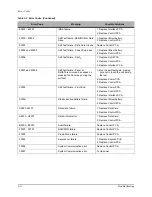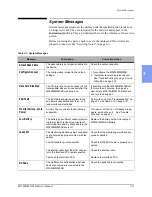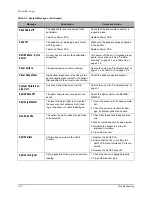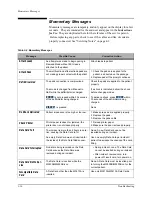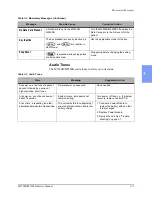
Troubleshooting and Repair Methodology
3
-
2
Troubleshooting
Troubleshooting and Repair Methodology
The M3500B/M5500B is designed to be a sealed, water resistant unit. We
recommend you follow the steps below so the sealing surfaces are not dis-
turbed unless absolutely necessary:
Interview the User
If possible, talk directly with the user who reported the problem. Identify
what they were doing when the problem occurred, and exactly what hap-
pened. What was on the display? What tones or voice prompts were heard?
Were there operational problems?
Identify the Problem
First, evaluate the unit’s condition using the steps in "Initial Assessment" on
page 3-3. Then use "Diagnosing External Failures" on page 3-4 to identify
problems that can be resolved without further troubleshooting. Finally, if
needed use "Diagnosing Internal Failures" on page 3-5 to isolate the problem
to a particular subassembly.
If no trouble is found, proceed to the "Performance Verification and Safety
Tests" chapter for instructions on tests to run.
Perform the Repair
Follow the procedures in the "Removal and Replacement" chapter to replace
any defective subassemblies.
When the repair is complete, it is good practice to check the repair by attempt-
ing to reproduce the specific problem found. It is also advisable to print the
System Log again to check that no errors have been logged after the repair.
Test the Unit
Use the procedures found in the "Performance Verification and Safety Tests"
chapter to verify that the unit is operating properly overall. Be sure the testing
performed is appropriate for the level of repair.
Summary of Contents for Heartstart XLT
Page 1: ...H E A R T S TA R T X LT S e r v i c e M a n u a l M 3 5 0 0 B M 5 5 0 0 B ...
Page 2: ......
Page 3: ...Service Manual M3500B HeartStart XLT M5500B Heartstart 4000 Defibrillator Monitor ...
Page 6: ......
Page 16: ......
Page 20: ......
Page 52: ......
Page 216: ......
Page 223: ......
Page 224: ...M3500 90900 Printed in USA February 2003 Second Edition M3500 90900 2 ...



